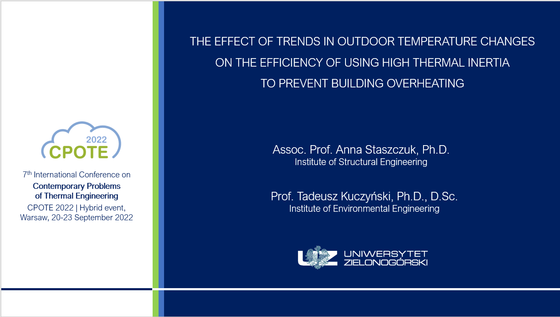The effect of trends in outdoor temperature changes on the efficiency of using high thermal inertia to prevent building overheating
In most studies, both experimental and theoretical, the effect of the thermal capacity of the building envelope on changes in interior temperatures is reduced to a 24-hour period within which daily heat gains are balanced by night-time heat losses. The obtained effect is evaluated by the reduction of the maximum indoor temperature, the reduction of the diurnal variation of the indoor temperature and the increase of the time delay of the occurrence of the maximum daily temperature. The results of research conducted in the summer of 2016 in two identical detached residential buildings differing only by the thermal capacity of the walls (cellular concrete and lime sand walls versus walls on a lightweight frame structure) allow us to believe that during the period when the external temperature increases significantly over several days, the difference between the temperature in the rooms of the lightweight and massive building systematically increases as well. In a short period of 1 to 5 days a situation occurs when the difference between temperatures in rooms of low and high thermal capacity is determined not only by the daily course of external temperature and solar radiation, but also by the accumulation of previous effects. The difference in peak temperatures in different rooms of the two buildings increased from 0 to as much as 3.5 K on consecutive days. On the other hand, when the outside temperature significantly and systematically decreased, the temperature difference between individual rooms of both buildings decreased in approximately the same range. The obtained effects depended on the location of the room with respect to the directions of the world. Future theoretical studies with a well-defined boundary condition should explain the reasons for the occurrence of the described experimental relationships. This paper is an analysis of the long-term experimental results and an attempt to provide the impulse to seek a theoretical explanation of the relationships obtained.





